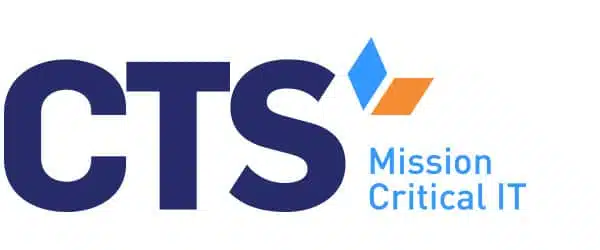Nonprofits are built to serve missions, not manage IT challenges. Reliable technology is essential to secure donor information, manage sensitive data, and deliver services efficiently. Unfortunately, many nonprofit organizations face persistent technology hurdles that can impact their day-to-day operations and long-term sustainability.
Pinpointing these challenges is the first step toward solving them. If it’s nonprofit data management, cybersecurity concerns, or adapting to cloud computing for nonprofits, the right IT solutions can help organizations protect their mission, stay compliant, and operate more effectively.
Challenge #1: Limited IT Budget
Every dollar counts for nonprofit organizations. Investing in IT often competes with funding for core programs and services, leaving little room for new technology, dedicated IT staff, or regular upgrades. Without proper nonprofit IT support, organizations may rely on aging systems, leading to downtime, inefficiencies, and security vulnerabilities.
When resources are tight, important initiatives like cybersecurity, data management, and infrastructure modernization can fall to the bottom of the priority list. Over time, this gap can widen, making it harder to meet compliance standards or respond quickly to new opportunities.
Tips for IT Cost Management:
Cost-effective IT management is possible, even for organizations operating on strict budgets. Here’s how:
- Tap into Nonprofit Technology Discounts: Technology vendors like Microsoft, Google, and Salesforce offer discounted or even free licenses tailored for nonprofit organizations.
- Adopt Scalable Cloud-Based Solutions: Cloud computing for nonprofits enables flexible scaling, allowing you to pay only for what you use. This ensures technology costs stay aligned with your operational needs.
- Prioritize Regular IT Assessments: Proactive evaluations help identify outdated systems and security risks early, avoiding expensive emergency fixes later.
- Invest Strategically: Focus spending on areas that deliver the greatest immediate impact, such as nonprofit cybersecurity tools or cloud storage solutions that protect sensitive donor information.
- Partner with a Managed IT Services Provider: Outsourced nonprofit IT support ensures access to expert assistance without the cost of a full-time, in-house team.
Learn more: IT Budgeting for Nonprofits: Planning Ahead for 2025
Challenge #2: Data Management and Storage
Managing data efficiently is a growing concern for nonprofit organizations. Donor information, volunteer records, financial reports, and program data must be accessible yet secure. Many nonprofits rely on legacy systems or manual processes that create confusion, hinder collaboration, and expose sensitive information to risk.
Without a streamlined nonprofit data management strategy, it becomes harder to maintain accuracy, ensure compliance, and deliver timely reports to stakeholders. Legacy systems and scattered storage solutions also limit the ability to scale as the organization grows.
Tips for Efficient Data Management:
A clear, centralized approach to data management strengthens both operations and security. Practical steps include:
- Move to Cloud-Based Systems: Cloud storage enables secure, real-time access to critical files and improves collaboration across remote and onsite teams.
- Implement Management Systems Designed for Nonprofits: Specialized nonprofit CRM and donor management platforms support better tracking, reporting, and engagement.
- Standardize Data Entry and Organization: Setting clear guidelines for how data is collected, labeled, and stored helps reduce errors and duplication.
- Regularly Update Systems: Keeping databases and applications regularly updated prevents the risks associated with legacy systems.
- Backup Sensitive Data Frequently: Protect critical files from accidental loss, corruption, or cyber threats by setting automatic backup schedules.
Learn more: 5 Cloud Solutions Nonprofits Should Be Using
Challenge #3: Cybersecurity Vulnerabilities
Nonprofit organizations face growing cyber threats. Cybercriminals target nonprofits believing they have fewer defenses, putting sensitive data at risk. A single data breach can disrupt services and cause significant financial losses.
Many nonprofits lack formal security protocols or nonprofit cybersecurity expertise. Outdated software, weak passwords, and limited staff training can create multiple points of vulnerability across the organization’s systems and devices.
Tips to Strengthen Security:
Proactive steps can significantly reduce cybersecurity risks:
- Implement Comprehensive Security Protocols: Multi-factor authentication, endpoint protection, and firewalls form the backbone of strong nonprofit cybersecurity.
- Develop a Formal Data Protection Policy: Define what constitutes sensitive information, who can access it, and how it must be handled and stored.
- Educate and Train Staff Regularly: Simple errors such as clicking phishing emails or using weak passwords often lead to breaches. Ongoing education empowers staff to recognize and avoid threats.
- Update and Patch Systems Frequently: Outdated software opens the door to cyber threats. Regular patching and updates close known security vulnerabilities.
- Encrypt Data and Communications: Encryption protects data in case of a breach, ensuring unauthorized access does not translate into usable information.
- Partner with Nonprofit-Focused Cybersecurity Experts: Managed security services provide ongoing monitoring and immediate response capabilities tailored to nonprofit needs.
Learn more: Cybersecurity Tips for Nonprofits: Stay Safe and Spend Less
Challenge #4: Legacy Systems
Many nonprofits continue to rely on outdated hardware or software that no longer receives regular updates. These systems create operational inefficiencies and limit integration with modern tools.
Over time, legacy systems become increasingly expensive to maintain. They also hinder an organization’s ability to adapt to new requirements or offer remote access, putting strain on staff and creating unnecessary risks for day-to-day operations.
Tips for Modernizing IT:
Moving away from outdated technology doesn’t need to happen all at once. A phased approach makes modernization manageable:
- Prioritize Critical Systems for Upgrade: Focus first on systems that handle donor information, financial transactions, and sensitive data.
- Implement Cloud Computing for Nonprofits: Cloud-based platforms offer scalability, enhanced security, and better real-time collaboration without large upfront costs.
- Create a Long-Term Technology Roadmap: Plan for gradual replacement or migration over one to three years, aligning upgrades with budget cycles and organizational goals.
- Retire Unused or Redundant Tools: Streamlining systems reduces maintenance costs and limits security vulnerabilities associated with forgotten software.
- Seek Nonprofit IT Support: Specialists can assess current infrastructure, recommend cost-effective updates, and manage smooth transitions away from legacy systems.
Learn more: 5 Cost-Effective Nonprofit Software and Technology Solutions
Challenge #5: Managing a Hybrid or Remote Workforce
Remote work is now a standard part of how many nonprofit teams operate. However, supporting a remote or hybrid workforce brings its own IT challenges, especially around data security, collaboration, and access to cloud storage.
Without clear guidelines and secure systems, nonprofit organizations risk unauthorized access to sensitive donor information, inconsistent communication, and breakdowns in team productivity.
Tips for Managing Remote Teams:
Building a secure and efficient remote work environment starts with the right foundation:
- Adopt Cloud-Based Collaboration Tools: Platforms like Microsoft 365, Google Workspace, and nonprofit-specific solutions support secure file sharing, video conferencing, and project management.
- Establish Secure Remote Access: Implement Virtual Private Networks (VPNs) and multi-factor authentication to protect sensitive information when accessed offsite.
- Train Staff on Remote Security Best Practices: Educate teams about protecting devices, securing home networks, and recognizing potential cyber threats.
- Regularly Update Remote Work Policies: Define expectations around data protection, device usage, and communication channels to ensure consistency and security.
- Use Centralized Cloud Storage for Important Files: Centralized access helps ensure that critical documents are updated in real time and protected against loss or unauthorized access.
Next Steps: Identify Your Nonprofit’s IT Challenges
Addressing IT challenges doesn’t have to be complicated or costly. IT solutions for nonprofits like cloud computing, system maintenance, cybersecurity policies, and managed IT support are practical and cost-effective.
With the right guidance and tools, nonprofit organizations can build a secure, scalable technology foundation that supports their goals, people, and mission.
If your organization is facing IT challenges, the first step toward a stronger, more secure operation is identifying those issues. Take a look at our guide to Creating an IT Strategy for Nonprofits to get started, or reach out to our team of nonprofit IT support specialists for an obligation-free consultation.



